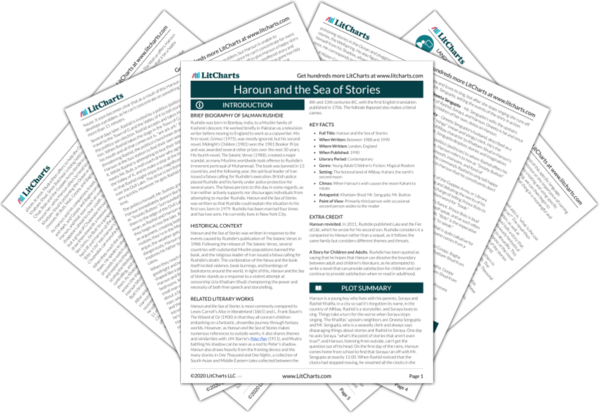Language, Words, and Naming
Haroun and the Sea of Stories is extremely concerned with words, naming, and the intricacies of language in general. It is filled with puns, plays on words, and double meanings, all of which encourage the reader to consider how exactly language works and functions, as well as what exactly its purpose is.
The novel contains many characters and locations whose names are derived from Hindustani words, and Rushdie even includes a reference glossary to provide…
read analysis of Language, Words, and NamingStorytelling
The first question the novel asks is, "what is the use of stories that aren't even true?" The novel then sets out to answer this question, as well as complicate the answers. As fiction, the novel tells a story that, by default, isn't necessarily true, and the obviously fantastical and magical elements emphasize this almost to absurdity. This process and style brings into question the purpose of the novel itself as it simultaneously explores the…
read analysis of StorytellingPower and Censorship
Haroun and the Sea of Stories was written in the years following the publishing of The Satanic Verses, which sparked immense controversy and began a years-long battle between Rushdie and some Muslim-majority countries, particularly Iran, over freedom of speech. Especially in light of these events, Haroun and the Sea of Stories can be considered a meditation on ideas of power and censorship, and how language and stories are tools that can be used to…
read analysis of Power and Censorship
Balance and Opposites
Throughout the novel, Haroun is confronted with opposing poles and concepts that are seemingly unable to coexist. Good struggles with evil; stories and language struggle with silence; absurdity struggles with logic. However, Haroun comes to realize that it's impossible to have, for example, only silence—there must be a balance of silence and sound, and this need for balance remains a common thread throughout.
The war between Chup and Gup, as well as the conflicts in…
read analysis of Balance and Opposites






